There is a part of me that takes great delight in using ordinary things in unintended and unexpected ways. I enjoy the puzzled looks on the faces of store clerks when they ask about my current project. Consider rebar. Short for reinforcing bar, rebar is a steel bar manufactured for use as a tension device in reinforced concrete. Its ribbed surface provides added surface area for adhesion to poured concrete. When exposed to the elements, it begins to rust within several weeks. All of these characteristics give rebar its charm in the minds of those who think outside the box.
You have walked past rebar in the building supply aisles of your local big-box store. Perhaps it’s time to consider some innovative ways to use rebar in your garden to give your space a clean, crisp industrial edge.
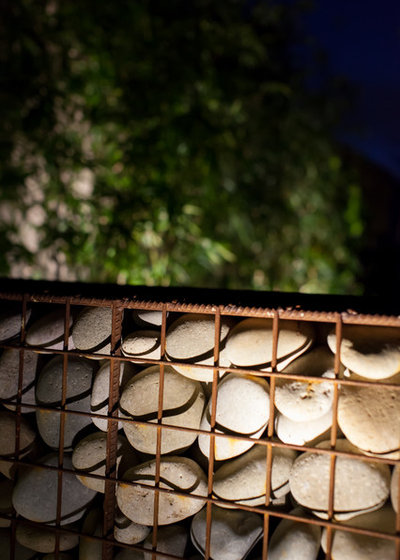
Studio H Landscape Architecture
As exposed reinforcement. Normally rebar is a workhorse that is hidden from view. In the case of this gabion, exposed rebar is used as a frame to which the agricultural wire is attached. Because it rusts quickly, it creates appropriate contrast against these river rocks.
Rebar is long lasting in general but can be affected by salt air. In this environment it can be pretreated with commercially available products, although this will limit the development of rust, which is part of its charm.
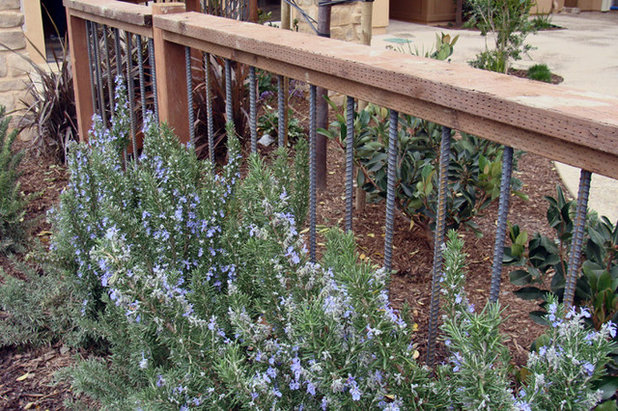
cultivate landscape design
On a baluster. This photo shows how rebar can be used to give an ordinary handrail a cutting-edge industrial vibe. This type of installation would be at home in a rustic garden as well as in a contemporary one.
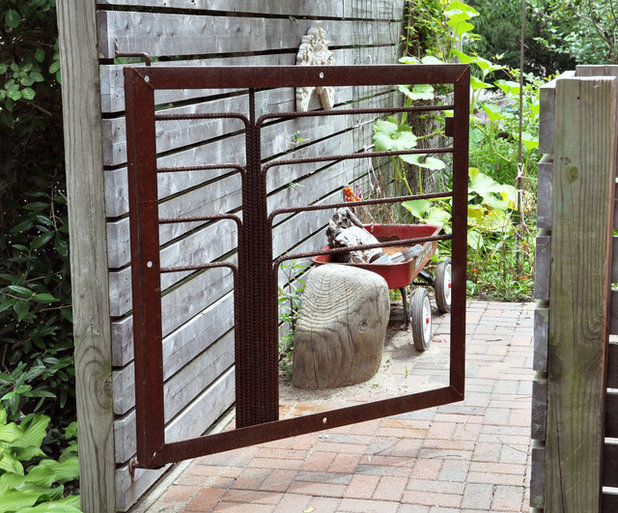
Rock Paper Hammer
Incorporated into a gate. The fact that rebar is easily bent makes it a logical choice for use in a custom gate or fence. In an installation such as this, it is important to keep in mind that rust is easily transferred to hands and clothing. Once the gate has rusted to the desired degree, you may want to seal it with a good application of clear coat.
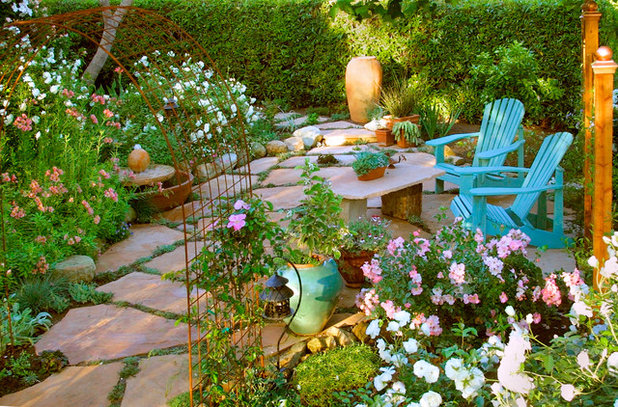
Margie Grace - Grace Design Associates
For an arbor. In an application similar to the gabion, rebar and agricultural wire can be used to build an inexpensive arbor upon which to grow vines or even a weeping tree. Be advised that rust may stain any substrate underneath it.
Rust is generally not harmful to plants unless the soil pH is lower than 5.0. At this level the plant’s ability to absorb major nutrients is severely compromised, so rust remains a minor issue with regard to plant health.
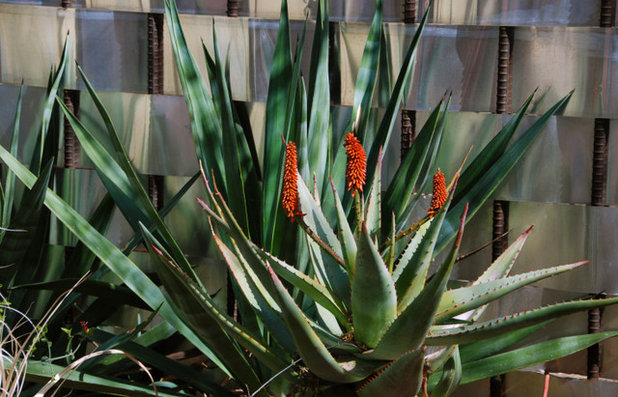
Lora Martens
As a one-of-a-kind fence. Here we see rebar used as structural support for a unique custom fence. Thin strips of metal are woven through it, adding depth and texture. A quick trip to your building supply store will reveal several options in sheet metal and roof flashing that can be used in this type of installation.
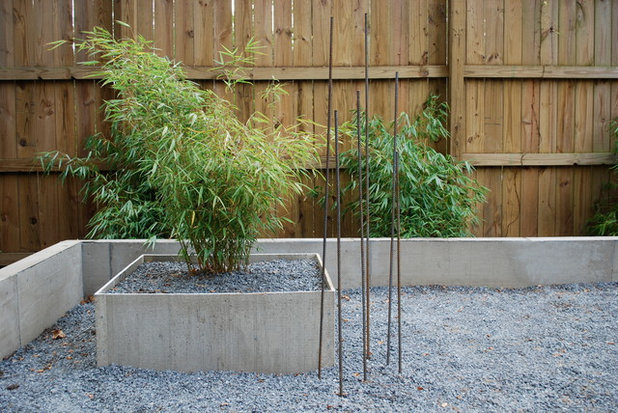
Jay Sifford Garden Design
As stand-alone art. Here we see rebar used effectively as an art installation. The rebar mimics the shape of the bamboo in this Asian-industrial garden.
Look around your garden for straight or curved lines that you would like to accentuate. Perhaps an installation of bent rebar would complement and contrast that gnarled grapevine, adding a new and unique layer of interest.
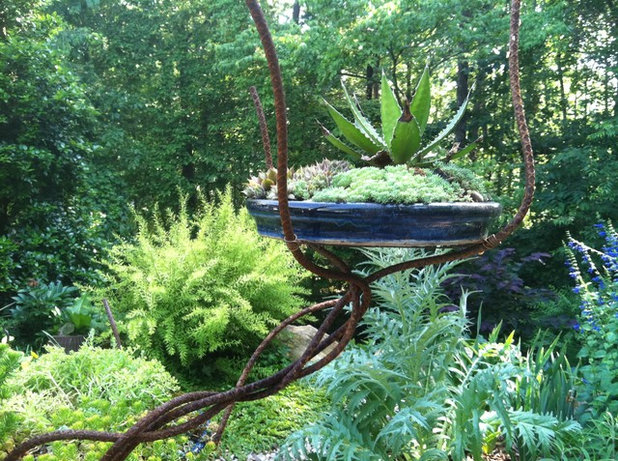
Eco-Art, LLC
As a pedestal for a planter. Three or four lengths of rebar can be wired or welded together to make a custom base for your favorite ceramic pot or planter. Here the rebar was bent to resemble branches or vines.
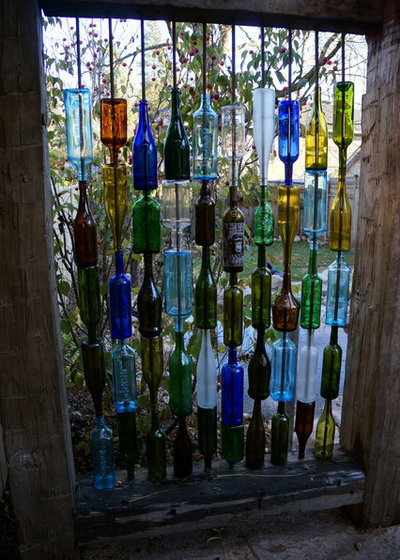 With wine bottles.
With wine bottles. Bottle trees are common in the southern United States, where legend portrays them as a way to capture evil spirits. Typically a metal frame or pieces of rebar are placed in the ground and topped with inverted wine bottles.
For this creative take on a bottle tree, wine bottles were threaded onto pieces of rebar, making a unique and whimsical privacy screen.
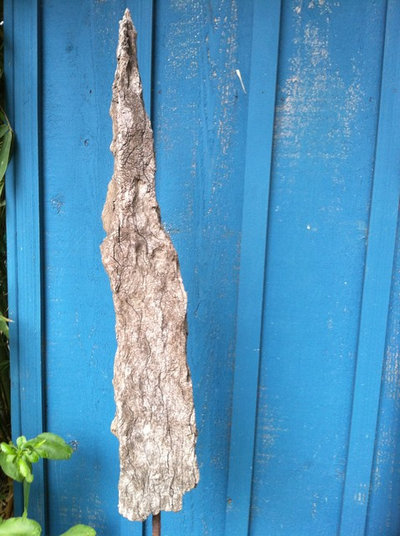
Lightlink Lighting
To turn found objects into custom art. Rebar can be used to mount ordinary objects, giving them prominence and new life in the garden. This mundane piece of driftwood was drilled and elevated on a rebar post, and made a focal point. Keep this idea in mind the next time you attend an estate sale.





